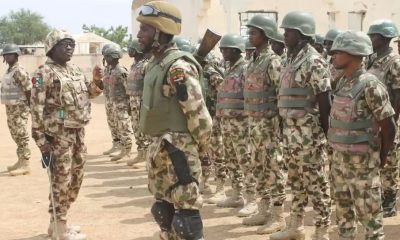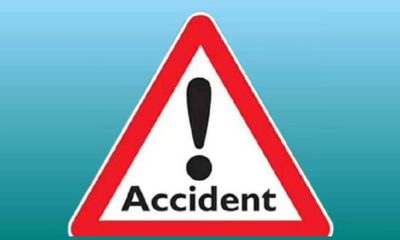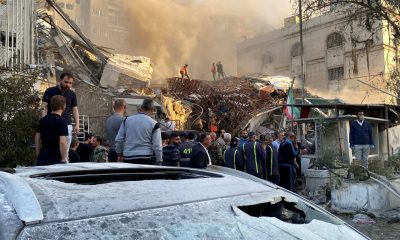Features
The gulf about to gulp the north
Published
8 years agoon
By
Publisher
Racing to close the development gap between the north and south that got wider in the MDG years, the northern elite are backing the wrong horse
By SEGUN ELIJAH
AS of 2008, there was a 40-year gap the north had to bridge to catch up with the south in terms of education. Former Kaduna Gov. Balarabe Musa noted this then. And he wasn’t smiling. “No matter the efforts, the north would never catch up,” he told the Tribune, “unless there is a revolution.” Musa’s pessimism came about eight years into the UN Millennium Development Agenda. As the MDG 15-year plan winds down October ending, the north-south gap keeps yawning.
And if by 2030 the gap doesn’t shrink below 20 percent, the northern elite, experts believe, will watch the future of their youth go to ruins. They will witness worse extremism and violence against women.
Currently, about 70 percent of the north, said ex-V.P. Atiku Abubakar, are unlettered. He noted this while jostling his contest for the APC presidential ticket last November. Atiku might be politicking saying that. But CBN’s ex-Governor Sanusi Lamido wasn’t fishing for any office when he spat out his figure: 93 percent of girls across the north are out of school in 2013. His own data would be easy to swallow when compared with ex-finance minister Usman Shamsudeen’s free throw in 2011: Northern Nigeria remains, and represents the only place in the world that has the highest number of children that are not going to school. There are 10.5 million out-of-school children in Nigeria. A huge slice of that population belongs in the north.
Some of the northern high hats made the education inequality a big deal. It is. And it has been, all the way from 1979 when Musa, as governor, vowed to make Kaduna catch up with Oyo in education within 26 years. It was just an idea running around his head. “If the succeeding governor had continued, Kaduna would have been there today,” he said. Today—41 years after, including 15 from the turn of the millennium—the beast of illiteracy has been most difficult to gee on. Except there’s a revolution, the CNPP chairman said, the chasm will forever widen.
And Musa, by 2011, got some kind of revolution—the anti-West Boko Haram insurgency in which about 300 schoolgirls were kidnapped, and hundreds of schoolboys massacred in their hostels. That isn’t exactly what he wants, though, because in this revolution, the 15-year effort of the MDG 4 (Education) has been wiped off. And the next 15 years of the new development agenda, the UN Education for Sustainable Development (ESD), might be wasted again.
Poverty, fuelled by illiteracy, will play a big role in missing the new education target (Goal 4) and Gender Equality (Goal 5) of the SDGs. And illiteracy, some do-gooding organisations have studied, has been the heart of the misery in the north. Between 54 percent and 85 percent of women and girls in no fewer than 11 of the 19 states in the north have no education—formal or vocational, according to Afri-Dev. Info.The bare bones of the NGO’s data crunching in its post-MDG studies suggest girl children will take the hardest knock. Their mothers have been in the crucible all along.
There’s a macho face to illiteracy in those states, too. Andit’s not an oil painting. Between 51 percent and 83 percent of men and boys in eight of those states are unschooled.Nine other states, the findings reveal, have failed to provide any education for between 20 percent and 50 percent of their male folks.
That has been the history in the last 15 years. The next will be as barren if nothing changes. “It is not possible to have lack of education and illiteracy on such a massive scale and expect any sustainable peace, development and prosperity,” said RotimiSankore, the editor-in-chief of Afri-Dev.Info. To worsen it, unemployment of boys and men, he noted, has been cruelly exploited by Boko Haram extremism— especially in the northeast.
Poverty and illiteracy, with unemployment thrown into the mix, has always made a gut-wrenching cocktail. CLEEN Foundation, a security research organization, and other researchers have loads of findings to confirm what an empty skull can do for a jihad. It matters little that knuckleheads can’t knock up IEDs the jihadists use to terrorize the citizens. “Arrest records suggest that the real armies of suicide bombers and terrorists’ foot soldiers are drawn from ‘disadvantaged, stranded populations,’Freedom Onuoha, a lead researcher at the National Defence College, Abuja, wrote in Why Do Youth Join Boko Haram?. And these self-martyrs further plunder their communities in the name of a crusade, resulting in a vicious circle of ignorance and misery that hems in about 16 million people in the northeast.
As the insurgency ravages the north, the rank of its illiterate have-notsalso swells, spilling across the IDP camps in Adamawa, Yobe, Borno, and others. Women and girls are in the majority. Of the 1.5 million people displaced, 52 percent are female, according UNICEF’s 2015 report on displaced population. Of the over 17,000 dispatched, more than 45 percent were Christian women and children, a recent study for Nigeria’s Political Violence Research Network stated. Others had been kidnapped, raped, enslaved, and tortured before they made it to the camps. And they have never been the same. About 400 of them, now expectant mothers, werehanded baby things by NEMA in July. More tiny feet are coming. “By 2015, 60,000 births are expected in IDP camps,” said RatidzaiNdhlovu, the country rep of UN Population Fund (UNFPA).The newborns will join thousands of other children battling malnutrition currently standing at 12 percent, going by the Global Acute Malnutrition rates. UNICEF also noted that 55 percent of the kids has no access to vaccination yet.
The humanitarian crisis created is huge in every respect. “It is now the business of the whole world,” said Sankore.The U.S handed out N8.7 billion in assistance in June while Japan also gave $3.4 million earlier. Nigeria has also secured a $2.1 billionto cushion the effect. But that isn’t just enough. In support of the federal government, the UN had a plan to raise $26.5 million this year to meet the education, health, nutrition, and other needs in the IDP camps. The states aren’t doing much—only appealing to the federal government. But they are, no doubt, feeling the heat of the violence—the effect of poor education and mass poverty—and its backlashes on governance, women and children.
Unfortunately, 18 of the 19 governors in that region think something other than illiteracy is the culprit. And they are trying to nab the 50 year-old Penal Code operating in the north for accommodating extremism. The Northern Governors Forum met recently, and decided to soup up their criminal justice system to tackle backwardness. To many development watchers, the governors are barking up the wrong tree. “Rather than set up a committee of 19 attorney-generals to review the Penal Code,” said Sankore, “the Forum should have set up a committee of commissioners of education, gender, youth and employment to address devastating education and skills gaps in the northeast and northwest.”
It’s a lot easier for the governors to blame the blind Lady of Justice than it is to see governance failure, which predates Boko Haram. Despite the state and federal budgets for education in the last 15 years,millions of citizens across the north remain uneducated—and underpowered to fight off poverty and diseases. Religious extremism is just a bonus.
But if the northern governors will pinch themselves to face reality, they will see the new opportunity knocking in the SDG. And the task of scaling down the galloping underdevelopment in the next 5,475 days will be well cut out.
To start right off the bat, the 2016 budget, Afri-Dev. Info report said, must be committed to beefing up education and vocational skills. Then there will be development. And peace. All in that pecking order.
Trending

 Business6 days ago
Business6 days agoDollar crashes further against Naira at parallel market

 Business6 days ago
Business6 days agoRecapitalisation: Zenith Bank to raise funds in international capital market

 Education6 days ago
Education6 days agoArmy reveals date for COAS 2024 first quarter conference

 Crime6 days ago
Crime6 days agoFleeing driver injures two on Lagos-Badagry expressway

 Covid-196 days ago
Covid-196 days agoBritish legislator demands Bill Gates, other ‘COVID Cabal’ faces death penalty

 Business6 days ago
Business6 days agoZenith Bank surpasses N2trn earnings milestone

 Latest4 days ago
Latest4 days agoIsrael pounds Hezbollah with airstrikes after Iran attack

 Featured1 week ago
Featured1 week agoAmerican football icon OJ Simpson goes home

